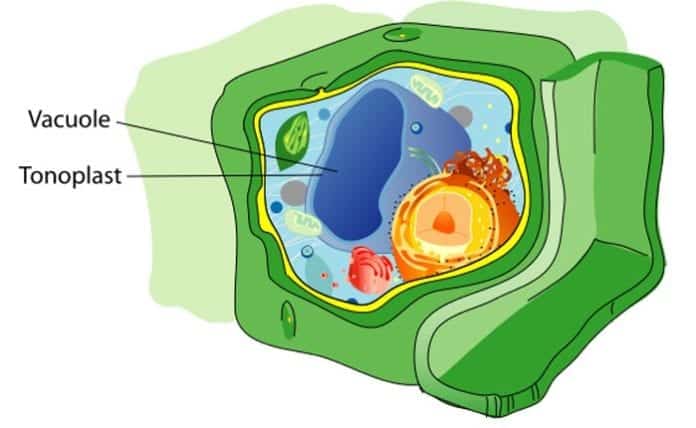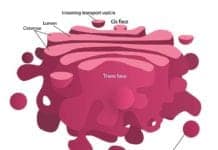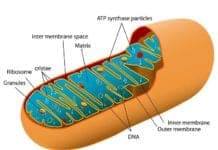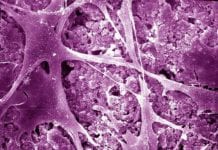
Central Vacuole: Plant cells, as eukaryotic organisms, are made up of various organelles that function together in other to sustain all features of the plant life.
For instance, when you look at plant cells under the microscope, you might have noticed a sort of a bubble of water that almost fills the whole cell. This structure is the central vacuole.
But more than just this structure, this plant organelle can do other significant functions. Also, what is the function of the vacuole? Let’s explore them in detail below.
Table of Contents
Discovery of Vacuole
 The discovery of the vacuole can be traced back along with the discovery of the first Scanning Electron Microscope in 1935. This organelle, which originally means “a cell space empty of any cytoplasmic matter” (Latin: vacuus), was once believed to harbor no to relatively little function. However, technological advancements have greatly made significant changes in this definition over time.
The discovery of the vacuole can be traced back along with the discovery of the first Scanning Electron Microscope in 1935. This organelle, which originally means “a cell space empty of any cytoplasmic matter” (Latin: vacuus), was once believed to harbor no to relatively little function. However, technological advancements have greatly made significant changes in this definition over time.
In 1676, Antonie van Leeuwenhoek, inventor of the microscope, discovered vacuoles. He examined bacteria (his first subjects) under microscope and he was the discoverer not just of vacuoles but of many other cellular structures. Check out the history of microbiology for other interesting details.
![]()
What is the Central Vacuole?
It has always been thought that all vacuoles of all types of cells have a common origin. However, recent discoveries revealed that different types and forms of vacuoles exist from a variety of cells.
For instance, a feature very unique to plant cells is the presence of a large central vacuole that fills a large portion of the cell mass and volume, and is essential for the physiology of the whole plant. Basically, there are two types of plant vacuoles namely: protein storage vacuoles and lytic vacuoles. These two types represent separate organelles as they are mediated by separate transport vesicles.
- As their name suggests, protein storage vacuoles are used to keep various proteins like defense proteins and storage proteins needed for overall plant growth.
- Lytic vacuoles, on the other hand, are mainly composed of hydrolytic enzymes that digest cellular components that are no longer, in any way, usable.
- Interestingly, the separation of the function of the protein storage vacuoles and lytic vacuoles says much about the need to keep the roles separate especially during embryonic development and maturation. However, both types are expected to become a ready source of various enzymes to start germination.
![]()
Structure Of The Central Vacuole
Structurally speaking, the central vacuole, as well other vacuoles, is made up of the phospholipid bilayer. Normally, vacuoles are just relatively small (in animal cells, and others); in plant cells however, the vacuole appears to be the largest organelle that occupies almost 90% of the whole plant cell mass and volume. Refer to plant cells vs. animal cells for comprehensive differences between them. The central vacuole itself is made of two components: the cell sap and the tonoplast.
- The cell sap is the liquid portion of the vacuole that is made up of sugars, amino acids, lipids, and mineral salts diluted in water. Sometimes, it also contains the pigments that serve as the basis for the color of the leaves and flowers.
- On the other hand, the tonoplast is the membrane that encloses the cell sap and separates it from the cell cytoplasm. In Greek, the name tonoplast literally means “tension” and true to this name, the tonoplast helps provide the tension on the vacuole. The Netherland botanist de Vries named this vacuole membrane as tonoplast in 1885.
And just like any other biological membranes, the membrane of the vacuole contains a lot of transport proteins that help in the movement of substances into and out of it.
Find more about central vacuoles and other amazing plant organelles in this video.
![]()
Functions of the Central Vacuole in plants
Appearing as simple as it is, there is actually a lot more to a vacuole than it seems. The following are some of the major functions of the central vacuole to the plant cell.
1. Maintain Turgor Pressure
As described earlier, the central vacuole can occupy as much as 90% of the plant cell volume. As such, it helps maintain the turgor pressure, the pressure that is exerted by the cellular components to the cell wall.
- The amount of water inside the central vacuole determines how much pressure should be exerted as a result of osmotic pressure. High water contents will cause the central vacuole to swell, resulting to increased turgor pressure whereas little amounts will cause it to shrink, resulting to lowered turgor pressure.
![]()
2. Storage
As mentioned earlier, one type of vacuoles is the protein storage vacuole which function for the storage of chemical products.
- Such type of function is very evident in plants like rhizomes, tubers, and bulbs which are types of plants that rely mainly on the storage of food material inside the vacuole.
![]()
3. Defense
Due to the fact that they lack the so-called “immune cells“, plants have developed a defense cell death that would help them deter pathogens. There are actually two mechanisms by how vacuoles are used for defense: non-destructive and destructive.
- In a non-destructive mechanism, the vacuolar membrane fuses with the plasma membrane and this fusion discharges the enzymes needed for cell death.
- On the other hand, the destructive mechanism happens when the membrane of the vacuole collapses, releasing the enzymes to directly destroy the cellular components; thus resulting to immediate death.
![]()
4. Gas Exchange and Plant Locomotion
Respiration (gas exchange) in plants is also governed by vacuoles. Special types of cells, called the guard cells, are responsible in the opening and closing of the stomatal pores in the leaves. By controlling the uptake of water inside its membrane, the vacuoles of these guard cells are able to regulate this activity.
- Vacuoles become important in the locomotion of some plants like the Venus flytrap Dionaea muscipula and the sensitive plant Mimosa pudica by regulating the activity of the tonoplast to lose and absorb water.
![]()
5. Cell Growth
By creating a high hydrostatic pressure inside the cell, the vacuole is able to aid during cell elongation. However, this only happens when the cell wall itself becomes soft and elastic enough for cell growth.
- In addition to this, the central vacuole also pushes the cytoplasmic organelles closer to the cell wall for greater light exposure.
![]()
Plants in general are often described as “inflatable“. Using your knowledge on the central vacuole, what do you think is the advantage of this construction how such compensation for the immobility of plants?
![]()
Cite This Page
References
- “Plant Life: Vacuoles”. Accessed September 10, 2017. Link.
- “Plant Vacuoles | Plant Cell”. Accessed September 10, 2017. Link.
- “δ-Tonoplast intrinsic protein defines unique plant vacuole functions”. Accessed September 10, 2017. Link.
- “The role of vacuole in plant cell death”. Accessed September 10, 2017. Link.
- “THE COMPOSITION OF THE CELL SAP OF THE PLANT IN RELATION TO THE ABSORPTION OF IONS. – PubMed – NCBI”. Accessed September 10, 2017. Link.
- “Tonoplast: Definition & Function – Video & Lesson Transcript | Study.com”. Accessed September 10, 2017. Link.






















